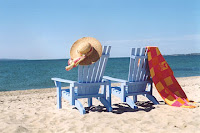An amazing new concept that I have recently come across. I recently required the services from a lady called Laura Helen, She runs a company that writes Eulogies.
A close friend passed recently and I was asked if I would do the Eulogy, This I thought of course, it would be an honour, I knew it was going to be difficult, but of course.
I had been searching the internet for ideas of what sort of stuff to include, and how to word it.
I am not a public speaker nor am I a writer, but I wanted something that I could read aloud that would do my friend justice.
Gifts Sent From Heaven.com
Catchy, the name got me thinking and I checked this site out. They have got a few Eulogy options, I chose the £50 package, I wasn't in a rush and they said 3-5 days. They do have a 2 day deadline (excuse the pun) for £30, but I had plenty of time. They delivered in 4 days, so gave me time to practice.
It started with a Skype call with Laura Helen, very friendly and pleasant, she asked about me, my friend, our relationship, what he liked to do, hobbies etc. It lasted about 30 minutes, it really helped me actually, talking to someone that didn't know us, reminiscing with the things we got up to, asking about me. Very supportive.
Then 4 days later she emailed me the Eulogy, it was amazing she had managed to get everything in there, the bit when we were kids, what we would get up to, about his family, I hadn't realised how much information I had given her. It was very well written and easy for me to read. She also said if there was anything that I wanted changing to just let her know and she would change it around.
My friends Mum thanked me and couldn't believe I could come up with something that good. She said the family was very moved.
My friends Mum thanked me and couldn't believe I could come up with something that good. She said the family was very moved.
 |
| Gifts Sent From Heaven.com |
That wasn't the best bit.
She also organises gifts for people who know they are about to pass, it wouldn't of helped my friend as he passed quite suddenly, but the elderly or terminally ill, would be impressed with what she does.
She talks with you, about you, your relationships, your loved ones that are going to miss you dearly, and come up with ideas that will help the heart ache of your loved ones when you have passed, to let them know that you are still thinking of them and that its OK to get on with their life's.
She says about a letter or poem to arrive shortly after you have passed, or a bunch of flowers on an wedding anniversary or birthday, or special gift that they know only you would buy for them.
I know my friends wife would love something like that, or his mum or even me, a special bottle of Cider that we used to drink, turn up one Saturday. Saying "Cheers, have a drink on me" Wow how awesome that would be.
I cant say I have seen anything like this before, but wish her the best of luck.
Gifts Sent From Heaven.com what an amazing concept, a truly original idea.












